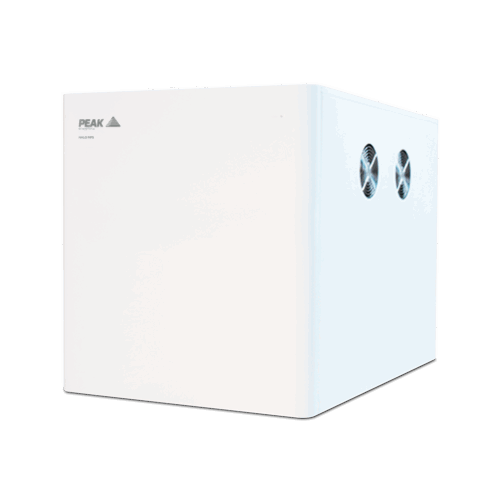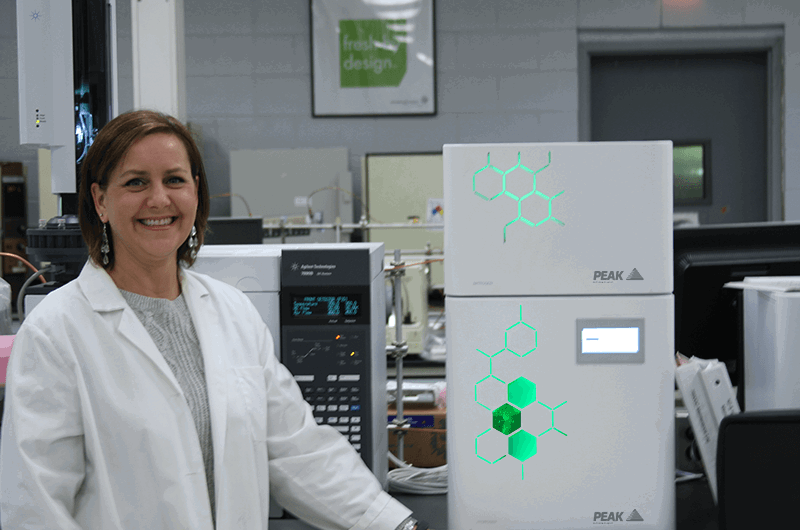Genius 1053 PSA Nitrogen Generator
Producing up to 20 L/min of high purity nitrogen (99.995%), the Genius 1053 is suitable for a range of Spectroscopy applications, such as Circular Dichroism.
Applications: CD, MP-AES, TGA, DSC, ICP-OES

Designed as a dedicated solution for MP-AES instruments supplying high purity nitrogen for plasma support gas or monochromator purge and dry air supply for POP gas and monochromator air purge, Halo produces 25 L/min of 99.5% or 10 L/min of 99.95% pure nitrogen with a supporting dry air supply of up to 36.5 L/min. Fitted with an oxygen analyzer, Halo will alert when operating purity has been reached through a purity status indicating LED light.
Compact in size, Halo is a space-saving solution for the lab, freeing up valuable lab space whilst being far easier to transport for field research than bulky gas cylinders or generators with an external air source. Manufactured by Peak’s laboratory gas generation experts, Halo has been engineered to operate comfortably at high altitude with the most advanced gas generation technology to produce the reliable, high purity nitrogen and dry air for your MP-AES application.
Gas Type: Nitrogen
Max Gas Flow: 25L/min
Max Output Pressure: 87psi/6bar
Max Purity: 99.5%
Gas Type: Air
Max Gas Flow: 36.5L/min
Max Output Pressure: 87psi/6bar
Gas Outlets Fitting: 2 x 1/4" BSPP
Start Up Time: <20 mins
Power Consumption: up to 2300 VA
Voltage: 230 V
Frequency: 50/60 Hz
Current: 8 A
Heat output: 7843 BTU
Max Operating Temp: 35°C / 95°F
Particles: <0.01 μm
Phthalates: none
Suspended Liquids: none
Accreditations: CE, CSA
Size (HxWxD) mm: 765 x 570 x 880 mm
Size (HxWxD) Inches: 30.1 x 22.4 x 34.6 inches
Generator Weight: 155kg / 341lbs

With over 20 years' worth of experience in developing gas generator technology alongside leading instrument manufacturers, we offer reliable laboratory gas solutions to meet your specific needs.

We'd love to find out more about your work and experience with Peak Scientific's gas generators. Share your experience and your story could be published on the Peak Scientific website.